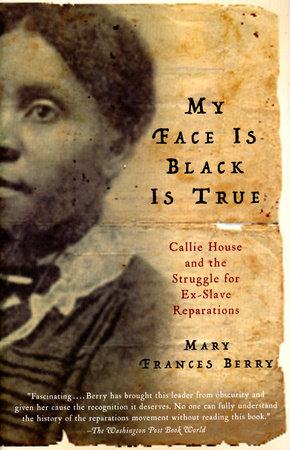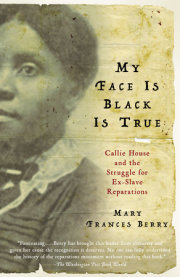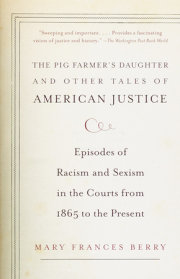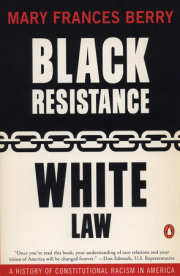Chapter 1PrologueWhen I was twelve, I became an outlaw, a transgressor of racial boundaries. That summer I did the ironing while taking care of the Abbotts’ infant boy. They lived in an all-white well-off Nashville neighborhood founded as a streetcar suburb in the late nineteenth century. On a July afternoon when Mrs. Abbott came home, I showed her a phonograph record I had taken from the shelf and played while I worked. Excitedly, I told her how I just loved the music, but the more I talked, the more agitated she became. Suddenly she snatched the record from my hands and practically exploded. “You had no business touching those records, and you shouldn’t be listening to such music in the first place.” I told her I was sorry, but she still seemed angry. I knew I had misbehaved terribly, but I did not understand how or why listening to that music was wrong.
I did not tell my mother, but when I finally told my Aunt Serriner, she worried aloud that I might become labeled a troublemaker. “Gal,” she said, “don’t be getting out of your place, stay out of those white folks’ things.” I stayed out of “white folks’ things” thereafter, or at least kept silent when I did not. However, the episode forever clouded my pleasure upon discovering Beethoven and his Symphony Number Nine.
Callie House did not stay out of “white folks’ things” either. She was also a racial outlaw. An African-American laundress from Tennessee, she became the leader of a turn-of-the-twentieth-century poor people’s movement that sought pensions from the federal government as compensation for slavery. Her movement, federal officials concluded, “is setting the negroes wild.” They thought that if they did not stop her, when African Americans understood that the government would never grant pensions, the nation would “have some very serious questions to settle in connection with the control of the race.” Consequently, the government harassed Callie House for exercising her constitutional right to petition the government and to mobilize others in the cause. When she would not relent, calling her “defiant,” the Post Office Department and the Pension Bureau redoubled their efforts to smear and confine her. Her organization was the first mass reparations movement led by African Americans.1
Callie House and the ex-slave movement did not accept the preachments or adopt the meek attitudes that Booker T. Washington counseled at the time. Today, some people argue against reparations because those who experienced slavery are no longer among the living. It is worth remembering that thousands of ex-slaves devoted years to pressing the reparations cause. They organized support networks and helped one another through very difficult times. That they bore the marks of bondage, as living ex-slaves, did not help them. Whites and elite African Americans ridiculed their pleas for redress, and the government disrespected their claims.
The first homes I knew, the orphanage on Laurel Street and the house of my mother’s eldest sister, Aunt Everleaner, where I lived in the 1940s, lay a few streets away from where Callie House resided until her death in 1928. There in South Nashville, down in the valley, looking up to the state capitol on the hill, we both became troublemakers. Commercial development has, for the most part, overtaken the neighborhood, erasing every vestige, every physical structure of that time and place. The address at which Callie House lived has long been occupied by a public housing unit. This book tells her story.
Chapter 1We Need a MovementWe are organizing ourselves together as a race of people who feels that they have been wronged.Callie House
(1899)
Callie House knew hard work. Born a slave, now a washerwoman and a widow with five children, she was at the bottom of America’s social and economic ladder as she stood proudly before a cheering crowd of African Americans. The National Ex-Slave Mutual Relief, Bounty and Pension Association had just elected her its first and only female officer. Addressing the convention delegates who had honored her with their votes, she talked about the thousands of people she had met on the road in the cause of compensation for slave service. House spoke of organizing local branches and collecting petitions to submit to Congress. She told them of her long hours spent “among strangers laboring to the best of my ability for the rights which my race is justly entitled to.” This woman of modest means but great courage would soon become the association’s leader. For her work, she would be praised by poor African Americans, ridiculed by the race’s elites, and targeted by high government officials, who feared her influence with the masses, and eventually land in jail. But on this November day in 1898, as she stood before supporters, newly elected assistant secretary of the nation’s largest reparations movement, all things seemed possible.1
Callie House came to prominence in the period historian Rayford Logan labeled the nadir, the lowest point along the long, rough road African Americans had traveled since Emancipation. Women were legally barred from voting, and black men suffered disenfranchisement through subterfuge and violence. Booker T. Washington advised against political activism. But many like Mrs. House chose another course. By the early twentieth century, her organization, the National Ex-Slave Mutual Relief, Bounty and Pension Association, according to federal officials, would swell to about 300,000, determined black people petitioning a government that barely recognized their existence and demanding a law ordering reparations for slavery.2
Through cajoling and explaining, House inspired the old ex-slaves to exercise their rights as citizens to demand repayment for their long suffering. She urged them not to give up despite continued oppression and listened as they shared stories about their lives under slavery. Often in tears, aging and ailing men and women recalled being treated as less than human during their years of unpaid labor for masters who sexually abused slave women, broke families apart, and who had “the power to whip them to death.”3
Although steeled for the effort to gain reparations, House and her cohorts were living in desperate times and still reeling from a bleak, awful past. House’s life experiences made her intimately familiar with the plight of those she referred to as the “ignorant, bare footed and naked” among her fellow ex-slaves. From family accounts, she was born into slavery in Rutherford County near Nashville, Tennessee, in 1861. (Her birth, like that of other slaves, was not officially recorded.) There, in a landscape of rolling hills, cereal and tobacco production, and horse farming, slave owners depended upon the labor of the approximately 13,000 blacks who constituted about 50 percent of the total population of the county.
Whether slaves had masters who, as one Tennessee slave put it, “gave them rations and warm clothes to wear” or scraps and rags that did not cover their nakedness, their lives in bondage etched indelible memories of suffering and abuse. A collective consciousness born of brutal experience shaped the reactions of Callie’s family and other slaves when freedom finally came. One Tennessee ex-slave remembered that on the plantation where she lived they could go to church, where they were admonished to obey their masters. She went to services “barefoot with a rag tied around her head and a dress that came up to her knees,” which was all she had to wear. She also was “whipped with a bull whip” and was not ashamed to say, in old age, that she “still had scars on her back put there by the master.” Another Tennessee ex-slave told of being sold away from her husband, whom she had never seen again. At the slave yard they told her to take off her clothes and roll down the hill so the prospective buyers “could see you had no bones broken or sores on you.”
The coming of the Civil War finally brought freedom but not an immediate response to the suffering. In 1862 and early 1863, when Callie House was a toddler, the Union Army swept through Tennessee, which had joined the Confederacy. In their wake the slaves made a mass move toward freedom. Her family was among the thousands of so-called contraband—slaves who either ran away or whose masters fled at the Union approach—in their wake. When the Union soldiers, whom the children called “the Blue Men,” came, slave men, women, and children followed along behind them. The women did laundry and cooking for the soldiers; the army gathered up the black men to work as laborers, digging ditches and building fortifications. Refugees slept where they could and ate what they could find. Then the Union decided to recruit blacks as soldiers. Callie House’s father, Tom Guy, like many other freed men, probably joined the Union Army in the 29th U.S. Colored Infantry Regiment. The unit served in the area at the Battle of Stones River at the end of 1862 and the beginning of 1863. In heavy fighting that the Union won, more than a third of the Union and Confederate troops were killed, wounded, or captured. In November and early December 1864, the 29th Regiment also helped repel the Confederate drive into Tennessee, ending at Franklin just south of Nashville. The fighting and the federal occupation devastated farms and communities in much of the surround-ing area, including Rutherford County. The numbers of refugees—contraband—fleeing slavery increased to a torrent.
House’s family and other African Americans tried to gain and maintain their freedom without being demoralized by the uncertainty all around them. African-American mothers and fathers begged Union officials to help them regain their children and reunite their families. At the same time, some former slave owners tried to regain or retain African-American children as slaves, even after abolition had come, by taking them as apprentices without their parents’ permission, or simply assaulting any parent who came to claim a child. A soldier stationed in Nashville in August 1865 begged his wife from Clarksville to join him. She did not want to leave before rescuing their daughter, who was still claimed by her former owner as a slave. The Freedmen’s Bureau agent gave her an order for the child’s release. The former slave owner complied, but as mother and child started down the road he overtook them and “beat her with a club and left her senseless on the ground after which he returned home with the child.” The former slave owner was arrested by Bureau officials and fined $100 for having “maltreated” her. However, in the meantime her soldier husband thought she had forgotten him, and he “married” another woman. Bureau officials refused to help dissolve the new “marriage” because upon seeing that some of the children of his original wife were “mulattoes” and others were “black,” they did not believe the soldier could have fathered all of them. The beleaguered mother was treated as a loose woman who could not be helped.7
The chaos and confusion, the elation over freedom, the struggle to survive, and the scars of their bondage shaped ex-slaves’ thinking about the meaning of abolition. Freedom for Callie and other ex-slaves would have been very different if the Union had kept its promises to give them land confiscated from Confederate slaveholders. The reparations question could have been settled at once. For the ex-slaves, the promise of land was real, not just something they imagined or hoped for. General William Tecumseh Sherman made the promise when thousands of freed people followed the troops when he marched his army from Atlanta to the sea in 1864–1865, laying waste the Confederacy. Secretary of War Edwin Stanton heard reports that Sherman had been heartless and shown indifference to the poverty-stricken condition of the newly freed people. Stanton came to Savannah in January to meet with Sherman and talk to African-American leaders about their needs. Twenty blacks selected by Union authorities, deacons, and ministers, three quarters of whom had been slaves, came to the meeting and let national leaders know that land was their major priority. When asked how they could best support their families, their self-selected leader, sixty-seven-year-old Baptist minister Garrison Frazier from Granville, North Carolina, replied, “To have land and turn in and till it by our labor.”8
With Stanton’s support, Sherman approved the request. He issued Order Number 15 of January 16, 1865, designating the rich sea islands and plantation areas from Charleston to Jacksonville, thirty miles inland, for settlement by the freedmen. Each adult male could claim a forty-acre tract. The March 3, 1865, Freedmen’s Bureau Act repeated the promise that each freedman would be assigned “not more than forty acres” of abandoned or confiscated land at rental for three years and an option to purchase at the end of that time with “such title thereto as the United States can convey.” Word of the promise spread quickly among the ex-slaves.9
By June 1865, 40,000 freedmen had been settled on the coastal lands and were growing crops. The promise of forty acres and a mule seemed a reality. However, any hope that this policy would expand to the rest of the South proved to be an illusion. After President Abraham Lincoln was assassinated, President Andrew Johnson gutted the policy. He issued an amnesty proclamation on May 29, 1865, pardoning many rebels and restoring their lands to them. Abolitionists tried to stop the policy change, but to no avail. The government dashed the sea island freedmen’s hopes after their hard work tilling land they thought was theirs. General Oliver Howard, who later founded Howard University, was ordered to either persuade or force blacks occupying the land under Sherman’s orders to abandon their claims to their former owners and return to work for them as laborers. Incredulous, the freedmen cried out at the betrayal. The accusation: that the government would “make freedom a curse to us, for we have no home, no land, no oath, no vote, and consequently no country.” Years later Wiley Childress and other aging ex-slaves recalled with still burning anger that “before Freedom the slaves were promised forty acres of land when freed but none ever got it.” He had also never heard of anyone “getting money” for their labor from the government.10
Although the rumors of land distribution continued to spread among the freedpeople, the government failed to keep the promise in the sea islands, middle Tennessee, or anywhere else in the South. House’s family worked and scrimped to help themselves with no government assistance. Members of Callie House’s family and other ex-slaves, such as ex-slave Ellis Ken Hannon, “dun all kinds of jobs. Anything that came along,” to stay alive. By 1866, Reverend John Savary, an abolitionist traveler in the South, reported the beginnings of the sharecropping and crop lien system, which soon gained a stranglehold on the freedpeople. He knew they would have great difficulty improving their status if they had no land and no capital: “They will continue to work on from day to day, and from year to year, without more than enough to keep soul and body together.”11
Copyright © 2005 by Mary Frances Berry. All rights reserved. No part of this excerpt may be reproduced or reprinted without permission in writing from the publisher.










